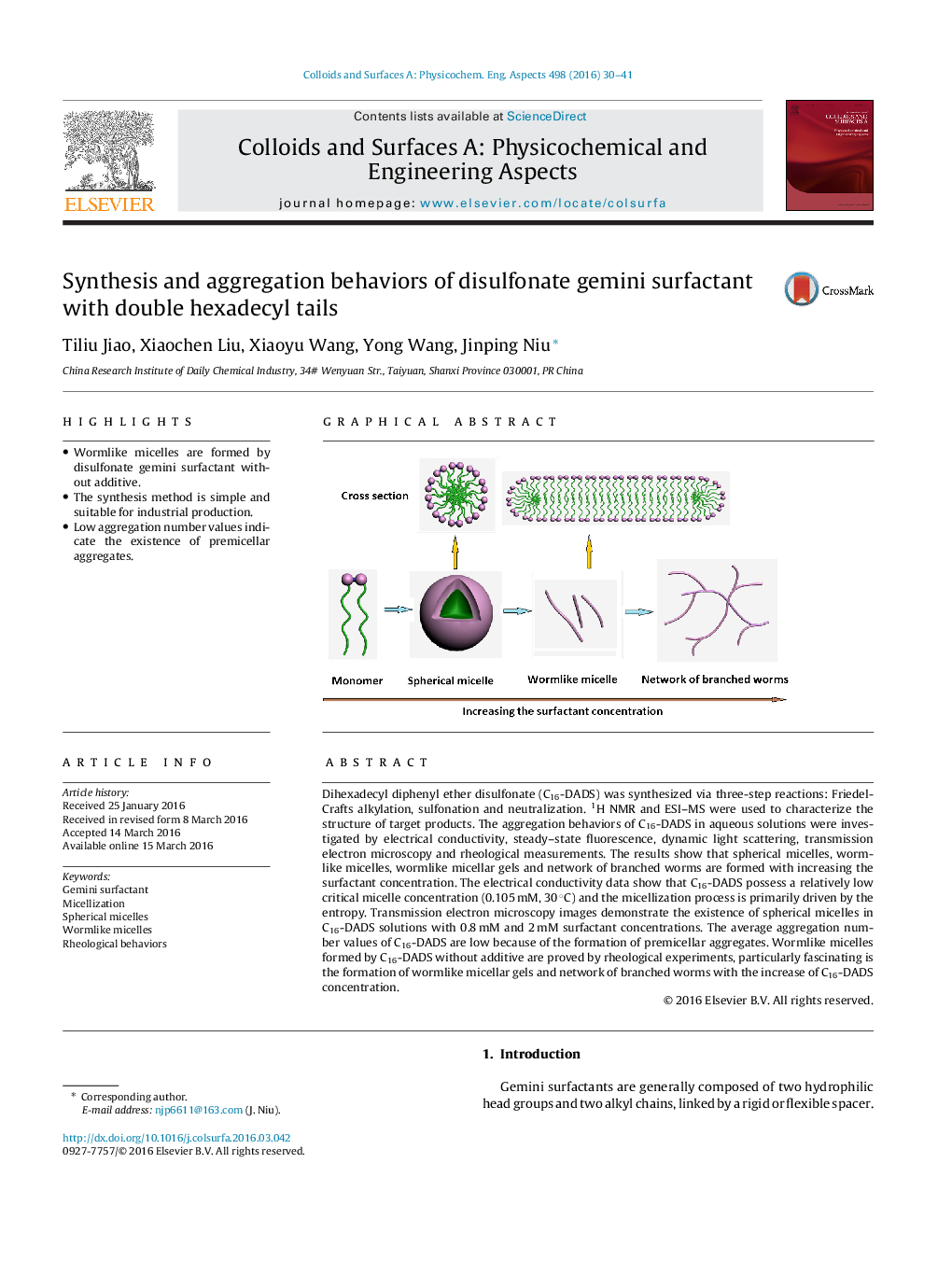| Article ID | Journal | Published Year | Pages | File Type |
|---|---|---|---|---|
| 591633 | Colloids and Surfaces A: Physicochemical and Engineering Aspects | 2016 | 12 Pages |
•Wormlike micelles are formed by disulfonate gemini surfactant without additive.•The synthesis method is simple and suitable for industrial production.•Low aggregation number values indicate the existence of premicellar aggregates.
Dihexadecyl diphenyl ether disulfonate (C16-DADS) was synthesized via three-step reactions: Friedel-Crafts alkylation, sulfonation and neutralization. 1H NMR and ESI–MS were used to characterize the structure of target products. The aggregation behaviors of C16-DADS in aqueous solutions were investigated by electrical conductivity, steady–state fluorescence, dynamic light scattering, transmission electron microscopy and rheological measurements. The results show that spherical micelles, wormlike micelles, wormlike micellar gels and network of branched worms are formed with increasing the surfactant concentration. The electrical conductivity data show that C16-DADS possess a relatively low critical micelle concentration (0.105 mM, 30 °C) and the micellization process is primarily driven by the entropy. Transmission electron microscopy images demonstrate the existence of spherical micelles in C16-DADS solutions with 0.8 mM and 2 mM surfactant concentrations. The average aggregation number values of C16-DADS are low because of the formation of premicellar aggregates. Wormlike micelles formed by C16-DADS without additive are proved by rheological experiments, particularly fascinating is the formation of wormlike micellar gels and network of branched worms with the increase of C16-DADS concentration.
Graphical abstractFigure optionsDownload full-size imageDownload as PowerPoint slide
